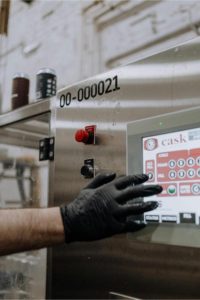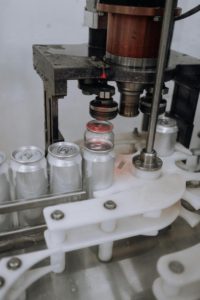- Choosing the right packaging manufacturer is critical — late shipments, poor quality, and weak service can damage profits and reputation beyond repair.
- A great partner practices manufacturing vigilance: consistent quality checks, strong efficiency metrics, and systems that prevent mistakes before they happen.
- Top manufacturers innovate with new materials, automation, and sustainability efforts, while also tracking scrap, productivity, and machine uptime to ensure reliability.
- Red flags include vague answers, no visible quality controls, inconsistent results, and lack of innovation — signals that a partner may harm rather than help your business.
It’s an uncomfortable truth: The wrong plastic packaging manufacturer can destroy your food business overnight. Late shipments, quality issues, and poor service harm your profits. They can also hurt your reputation. Customers may not come back for a second chance.
Apologies for putting that image into your head. Let’s step back and take a deep breath.
As a food industry professional, you need a packaging manufacturer that feels like part of your team. It should not add to your stress or uncertainty. How do you separate the truly reliable partners from those who promise the world but deliver disappointment?
After over fifty years in food packaging, Inline Plastics has built strong ties with industry leaders and understands what makes a vendor a trusted partner.
This article shows the key metrics, warning signs, and criteria that distinguish the best plastic packaging manufacturers from those who believe “good enough” is enough. You’ll identify the important efficiency benchmarks to seek and explore systems that guarantee quality and prevent mistakes.
The Hidden Costs of Choosing the Wrong Partner
 Each day you partner with a poor packaging manufacturer, you lose money and hurt your reputation. Your entire supply chain suffers when your packaging partner can’t deliver on time. Your products are stuck in warehouses. Customers get frustrated. Competitors move ahead as you rush to fix issues that shouldn’t happen.
Each day you partner with a poor packaging manufacturer, you lose money and hurt your reputation. Your entire supply chain suffers when your packaging partner can’t deliver on time. Your products are stuck in warehouses. Customers get frustrated. Competitors move ahead as you rush to fix issues that shouldn’t happen.
Low-quality control causes recalls and returns. This hurts relationships with retailers. Inconsistent service also leads to unpredictable costs. As a result, budgeting becomes tough, and planning becomes a nightmare.
The food industry operates on razor-thin margins where efficiency isn’t just nice to have — it’s survival.
What a Great Fit for Your Business Looks Like
And no, we don’t mean skinny jeans.
Top packaging manufacturers do more than create containers. They practice “manufacturing vigilance.” This means they constantly monitor their systems, which helps ensure quality and timely delivery.
Innovation and Adaptability: Staying Ahead of Industry Changes
The food packaging world changes quickly. This happens because of sustainability needs, new regulations, and changing consumer tastes. Top manufacturers focus on research and development. They explore new materials, processes, and technologies to help their customers.
Look for evidence of innovation in their operations: Are they testing biodegradable materials? Have they implemented automation or vision systems to improve quality control? Do they work on industry research? Do they connect with material suppliers for new solutions?
More importantly, can they adapt their processes to meet your specific needs? Top manufacturers see custom requirements as chances, not hassles. They use these chances to create solutions that give their customers a competitive edge.
Machine Efficiency: The Foundation of Reliability
 Top manufacturers keep machine efficiency at 80-90%. They consider planned maintenance, material changes, and unexpected breakdowns.
Top manufacturers keep machine efficiency at 80-90%. They consider planned maintenance, material changes, and unexpected breakdowns.
It’s not just about pricey equipment. It’s about having systems that keep things running smoothly and help spot problems before they disrupt your orders. Manufacturers who can’t tell you their efficiency numbers either don’t track them (a red flag) or don’t want to share them (an even bigger red flag).
Productivity Metrics That Matter
Look for manufacturers who measure productivity in meaningful ways. The best way to track output per employee is cases produced per person. This shows how well they balance staffing with demand. Overstaffed operations pass unnecessary costs to you through higher prices, while understaffed operations create bottlenecks that delay your shipments.
Scrap Management and Waste Control
In thermoforming and plastic manufacturing, some waste is unavoidable. It’s like finding mystery leftovers in your office fridge; it happens. But the amount tells you everything about operational discipline. Manufacturers that track and reduce scrap rates pay close attention to detail. This focus also improves quality control and helps manage costs.
Top manufacturers don’t just monitor waste. They recycle and reclaim value from post-industrial materials, turning unavoidable byproducts into revenue streams instead of costs.
The Three Pillars of Manufacturing Excellence
-
Mistake-Proofing Systems
Elite manufacturers build mistake-proofing into their processes at multiple levels:
- Sensory alerts like color coding and visual warnings make problems obvious.
- They include automatic shutdowns that stop production when quality parameters drift out of range.
- They have forced controls that make it physically impossible to do tasks incorrectly.
When touring a facility, look for evidence of these systems. Can operators easily distinguish between different materials? Do machines shut down automatically when sensors detect problems? Are there physical constraints that prevent incorrect assembly or packaging?
-
Predictable and Repeatable Operations
 Your packaging needs don’t change daily, and neither should your manufacturer’s processes. The best partners build systems that work well every time and give reliable results, no matter who is working or what shift it is.
Your packaging needs don’t change daily, and neither should your manufacturer’s processes. The best partners build systems that work well every time and give reliable results, no matter who is working or what shift it is.
This predictability extends beyond the factory floor. Order processing, customer service, and logistics must follow the same steps, ensuring a positive experience each time.
-
Continuous Monitoring and Vigilance
Great manufacturers never assume their systems will maintain themselves. They include monitoring and oversight in every process. This way, improvements stay strong, and quality remains high, even when volume increases.
Look for vigilance in quality control, maintenance schedules, and employee training. Manufacturers who “set it and forget it” inevitably disappoint when you need them most.
Red Flags That Should Make You Walk Away
Some warning signs become obvious during facility tours or initial conversations:
Not discussing efficiency metrics may mean they either track poorly or have results they’re ashamed of. Either way, you can’t make informed decisions without data.
Frequent operator reassignments indicate poor workforce planning. When employees frequently change machines or processes, it affects quality and efficiency.
Lack of visible quality control systems means you’re trusting luck rather than process. If you can’t see evidence of mistake-proofing and quality monitoring, assume they don’t exist.
Vague answers about capacity planning raise concerns. They might hide problems or simply don’t understand their operations well enough.
No evidence of innovation or improvement initiatives signals a manufacturer is stuck in the past. If they can’t talk about recent process improvements, new technologies, or industry changes, they may fall behind competitors who can.
Inconsistent results across different periods reveal underlying operational problems. If their quality metrics, delivery times, or efficiency numbers change a lot each month, it shows poor process control. This could lead to unreliable systems, hurting your business in the long run.
Making Your Decision: What Questions to Ask
 Before committing to any packaging manufacturer, get specific answers to these critical questions:
Before committing to any packaging manufacturer, get specific answers to these critical questions:
- What are your machine efficiency percentages, and how do you track them?
- How many cases (or units) do you produce per employee, and how does this compare across your facilities?
- What mistake-proofing systems do you have in place for my specific product requirements?
- How do you ensure consistent quality and delivery times across shifts and seasons?
- What metrics do you use to measure and maintain operational performance?
- What new technologies or ideas have you used to boost efficiency, quality, or sustainability?
Your Path to Packaging Partnership Success
Choosing the right packaging manufacturer gives your food business a competitive edge. They provide reliable quality and service. This allows you to grow your brand without worrying about supply chain issues.
Don’t choose manufacturers who cannot explain their processes or demonstrate their commitment to quality. Your business needs a partner who matches your professionalism and precision.
The difference between success and failure in the food industry often comes down to the reliability of your partners. Pick packaging manufacturers that show their quality with precise results. They should use systematic methods. This will help ensure the consistent performance your business needs.
Customers don’t care about your supplier’s excuses. They just want their food to arrive fresh and intact. Ensure your packaging partner values excellence, too. You may get through one supply chain issue, but your reputation can’t handle it happening repeatedly.
Do you want to find out more about manufacturing? Visit our Learning Center today!


